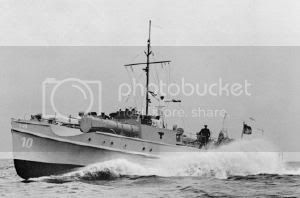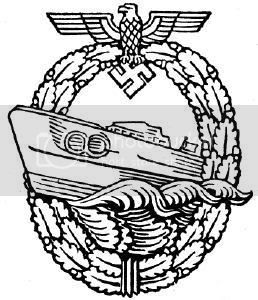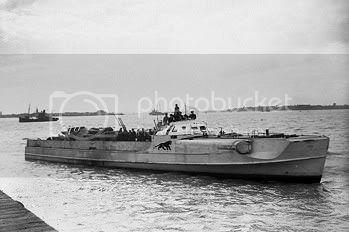With the Military Small Craft-"Mosquito Fleet" campaign about to commence, I thought that I would be nice to give a brief history of the Schnellboots just to "amp up" the anticipation.
This information is based on Wikipedia and the prinzeugen website the link which is outlined at the end of this piece.
Schnellboot

Historically, the E-boat was the British and American term for the World War II German Schnellboot (S-Boot), a small fast torpedo boat of approximately double the size of an American PT boat and the British MTB. It is believed that the E stood for "Enemy". Compared to the Allied craft, many considered that the E-boats were better suited for the open sea and had a substantially longer range at approximately 700 nautical miles.
History
After the Treaty of Versailles most of Germany's military production was severely curtailed. Small patrol craft were not. The E-boats trace their lineage back to a private motor yacht — a 22 ton displacement 34 knot craft called Oheka II, which had been built in 1927 for wealthy financier and patron of the arts, Otto Kahn, by the German shipbuilding company Lürssen.
E-boats were used in the English Channel to intercept shipping heading for the English ports in the south and east. As such they would be up against Royal Navy and Commonwealth contingents in Motor Gun Boats (MGBs) and Motor Torpedo Boats (MTBs) and Motor Launches and destroyers.

Crews could earn an award particular to their work - denoted by a badge depicting an E-boat passing through a wreath. The criteria were good conduct, distinction in action, participating in at least twelve enemy actions. It was awarded for a particularly successful mission, displays of leadership or being killed in action. It could also be awarded under special circumstances such as when another decoration was not suitable.

Variants
The E-boat design evolved over time. The first had a pair of torpedo tubes on the fore deck. Types were:-
S-26 class: Entered service in 1940. 40-metre (= 131.23 feet) hull. Torpedo tubes covered by forward deck.
S-30 class
S-38 class
S-38b class: Improved 38 class with armoured bridge.
S-100 class: From 1943. 2 x 20 mm gun amidships and 37 mm gun aft.
S-151 class
Type 700: late war design proposal with stern torpedo tubes and 30 mm gun turret forward. 8 boats built, but completed to S-100 design specification
Specifications
Length: 34.9 m = 114.5 feet
Weight: up to 120 tons
Speed: 43.8 knots
Engines: Three 20-cylinder 2000 hp Daimler Benz MB501 diesels driving three shafts (propeller)s.
Armament:
2 x 53.3 cm (= 21 inches) torpedo tubes, with room for 2 torpedoes for reloading.
1 x 20 mm gun, (20 mm single on early boats, Zwilling and special bow version on later classes)
1 x 40 mm gun (40 mm Bofors) on some S38 class boats
Other armament carried on different models included 3.7 cm Flak 42 (S-100) or, rarely, a quad 2 cm Flakvierling mount.

This is a picture from the Admiralty Official Collection. It records one of the E-boats wearing a white flag at the coastal forces base HMS Beehive, Felixstowe. The two German E-Boats, the first surface craft to surrender, were escorted in by ten British MTBs. On board one of the E-Boats was Rear Admiral Karl Bruning, who had been in charge of E-Boat operations and who signed the instrument of surrender. Note what appears to be a black panther painted on the side of the E-Boat, the word Long is painted above it.
For more in depth information I recommend the following website
prinzeugen
Regards
Sean













